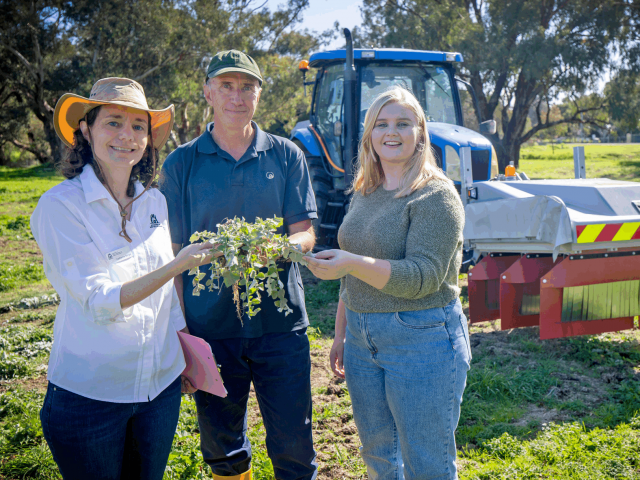Electric weed control project marks second year
Project name
What's the best fit for electric weed control?
GRDC Code
DAW2303-002OPX
Innovative project progresses
Managing weeds is a significant challenge, both in Australia and worldwide.
To avoid soil erosion, growers are using fewer mechanical tools to control weeds and relying more on herbicides, leading to higher rates of herbicide resistance.
To tackle this problem, alternative forms of weed management need to be considered.
Department of Primary Industries and Regional Development (DPIRD) researchers are investigating the effectiveness of an electric weed control machine called the AGXTEND XPower, powered by the company Zasso.
This is occurring through a project that includes collaboration from AGXTEND (a brand of CNH Industrial), as well as support from the Grains Research and Development Corporation, Wine Australia, the Cotton Research and Development Corporation, AHA Viticulture and the Western Australian Local Government Association.
This is an Australian-first project investigating electric weed control which is now in its second year.
The machine uses mechanical power to produce a high voltage current, which is applied directly to plants through a series of electrodes mounted behind or in front of the tractor.
As the electricity passes through the plant, the cell walls are destroyed.
This process either kills the plant or suppresses the growth.
But there are lots of things that can affect the efficacy of electric weed control.
How strong the electricity is, what the weed looks like, and the environment it's in can all make a difference.
So, the project will also examine which weeds are easiest to control with electricity and the technology’s potential uses in Australian agriculture to generate cost savings and influence crop yields.
Comparing the findings
DPIRD research scientist Miranda Slaven said the results are promising thus far.
“Last year’s trials have shown that electric weed control is effective when used at the right application speeds and under the right environmental conditions.
In the 2022 trials, effective control was achieved for annual ryegrass, kikuyu, wild radish, capeweed, soursob, and medic at application speeds of 1-4 km/h.
However, it is noted that broad leaf weeds are easier to control than grass weeds due to differences in plant structure.
Therefore, application speeds (i.e. ‘dose’ of electricity) need to be adjusted accordingly, as would occur with herbicide application rates,” she said.
Trials conducted this year by DPIRD have shown further success including the analysis of the effectiveness of electric weed control on herbicide resistant weed populations with a trial on glyphosate resistant annual ryegrass.
Operating the electric weed control at a speed of 2 km per hour proved highly effective in reducing weed biomass by more than nine times compared to using glyphosate (RoundUp Ultra Max at 1.5 L per hectare).
This finding shows that growers facing herbicide-resistant weeds could use electric weed control as an alternative option to chemicals.
For instance, this technology can be employed along fences or roadsides, and for maintaining fire breaks.
Looking to other applications
DPIRD is also investigating the integration of precision agriculture applications with this technology in this year’s trials.
The AGXTEND machinery records both its power output and GPS location during operation.
The power output varies based on weed size and density, and this data can potentially be used to create a precision map of weed incidence.
DPIRD is connecting this information with weed biomass data and drone imagery to generate such maps.
Contact
Miranda Slaven
DPIRD Research Scientist
E: Miranda.Slaven@dpird.wa.gov.au
P: (08) 9690 2111

